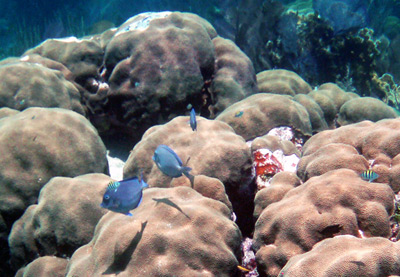We aquarists try very hard to keep our animals alive as long as possible for a few reasons. The first is that we are caring people and don’t want to see them hurt. The second is that our specimens cost us a lot of money. Exactly how much money depends a little on the care we provide.
For example, if we buy a purple tang for $100 and it lives for 10 days, then that fish cost us $10 a day to enjoy. I would say that is an expensive fish! But if that same fish lives ten years, then it costs us maybe around three cents a day (I didn’t do the math, but you get my point). So then, it is a very cheap fish.
We should all try to keep our fish long enough that they die from old age. If our fish keep getting sick and dying, we are doing something wrong, as our fish should never get sick—except for the occasional headache or upset stomach.
How long can fish live?
Most medium-sized aquarium fish live for about 12 to 15 years, as that is their natural lifespan. This is a general statement, of course, because some fish, such as clowns, live well into their 20s. Smaller fish, such as clown gobies, small blennies, pipefish, and seahorses, might live for five or six years. Some tangs will live into their 20s, and groupers can reach 50. Again, these are generalizations, as different fish have different lifespans and many of them do not reach their full life expectancy in captivity.
I do feel that most fish kept in aquariums can live longer than their wild counterparts due merely to the fact that they don’t have enemies in their tanks (or shouldn’t unless we put them there) and no one is trying to catch them with huge nets and sell them for food. In fact, a fish can only look forward to a peaceful death if it is in a very good aquarist’s tank. Virtually all wild fish die by being eaten alive or suffocating on the deck of a ship.
So, how do we know if a fish is dying of old age? Actually it is relatively easy. First of all, the fish should be full grown. That is easy. Next, we should have an idea of how long that type of fish would normally live. I gave some examples above. A fish that has lived to the full extent of its lifespan displays symptoms that are easy to spot. I’ve had many fish die of old age, and they all do it about the same way.
Symptoms of fishy senescence
Somewhere around the last couple weeks of a fish’s life, it will begin to slow down but not exhibit any signs of disease. It will no longer be the first one to feed, and it may not even make much of an effort to eat. In a few days, it will stop eating altogether and may rest in a corner. Eventually, other fish will pester and nip at it. Initially, it will try to get away from its tormentors or bite back, but right near the end, it will stop resisting and its fins will become torn. It may also develop some spots as its immune system stops functioning. Then, it will get very lethargic and likely be found dead in the morning.
There is nothing we can do for such a fish except pat ourselves on the back for allowing such a beautiful creature to exist for as long as possible.
What about corals?
We don’t have to worry about that for corals, as they are immortal. Yes, corals live forever, sort of like politicians. Well, the actual coral polyp is not immortal, but the colony is. Each coral colony is composed of numerous polyps, and as new polyps are produced, they settle on top of older polyps and, in that way, make the colony larger.
However, entire coral colonies can be killed in various ways in nature (if they didn’t, the world would be full of corals)—for example by typhoons. I am not sure why storms in the southern hemisphere are called typhoons and storms in the northern hemisphere are hurricanes. I would imagine the guy who makes these names up had some free time. I don’t know. But either way, typhoons can destroy corals quite easily.
I have been in the South Pacific during typhoons, and I am surprised anything survives these storms. I have seen brain corals the size of my car turned upside down and corals almost the size of my house broken into little pieces. I’ve seen numerous very large sea fans hundreds of yards up the sides of mountains.
Besides the turbulence from the storm, huge quantities of dirt from islands run into the water, covering corals for miles out to sea. These storms kill some corals but allow others that were shaded by the larger corals to prosper.
That’s life and it’s always been that way!



